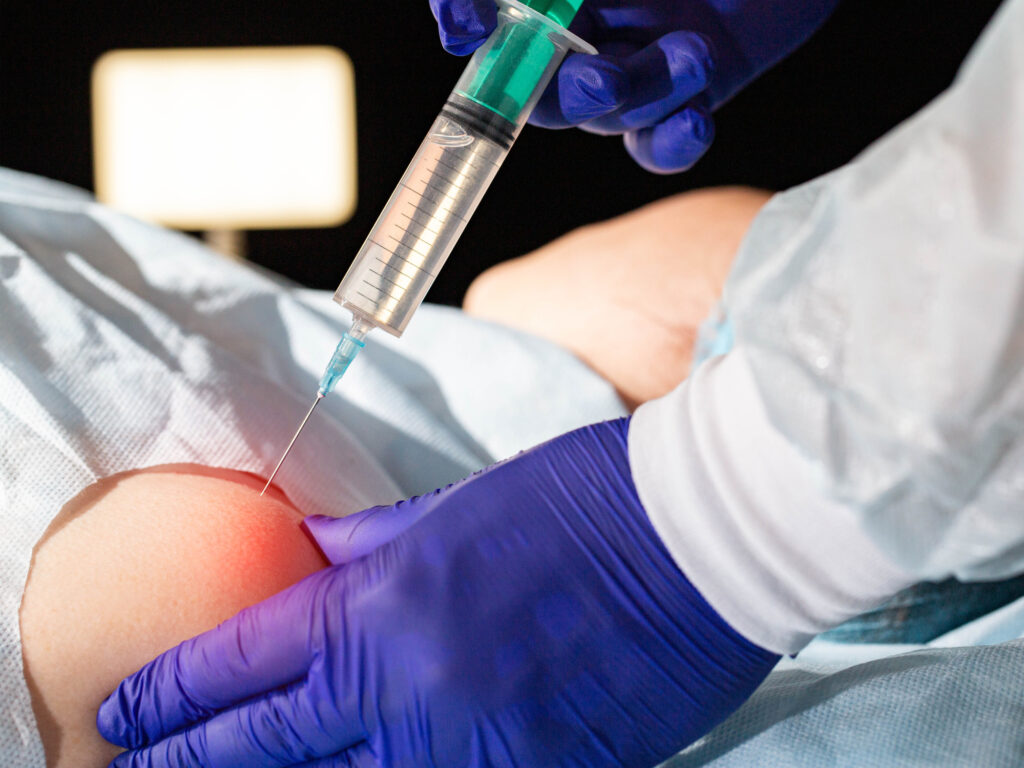Supraclavicular Brachial Plexus Block
A supraclavicular brachial plexus block is a precise, regional nerve block used to relieve pain or provide anesthesia in the shoulder, arm, and upper chest. By targeting the brachial plexus nerves just above the collarbone, this minimally invasive treatment can help manage acute or chronic pain conditions, as well as provide surgical anesthesia for upper extremity procedures. The block allows for effective pain control without the need for general anesthesia or systemic medications.
It is often used in outpatient settings and is especially valuable for patients seeking targeted relief with minimal impact on other parts of the body.

What is it?
A supraclavicular brachial plexus block numbs the shoulder and upper extremity by blocking the brachial plexus nerves above the collarbone. It’s used for both surgical anesthesia and pain management.
How is it performed?
Using ultrasound guidance, local anesthetic is injected around the brachial plexus nerves. The procedure takes about 20-30 minutes.
Keypoint #1-Lorem Ipsum
Lorem Ipsum mon fringilla dolor felis amet fusce.
• Libero auctor
• Enim molestie iaculis
• Massa bibendum
• Ultrices varius
Metus euismod tellus penatibus in ex morbi euismod mollis.
Phasellus venenatis augue luctus sollicitudin elementum suspendisse.
Treatment Benefits
This procedure provides rapid, localized pain relief that can last for several hours to days, depending on the type of anesthetic used. It minimizes the need for opioids and can improve post-operative recovery by reducing inflammation and discomfort. Because it’s performed under ultrasound guidance, the injection is highly accurate and well tolerated.
Who Can Benefit From This Treatment
This treatment is commonly recommended for individuals undergoing shoulder or upper arm surgery, as well as those with nerve-related pain from injury, trauma, or chronic conditions like complex regional pain syndrome (CRPS). It may also be used as part of a multimodal pain management plan for those looking to avoid systemic medications. A consultation can help determine if this approach aligns with your specific condition and treatment goals.
Learn more about Supraclavicular Brachial Plexus Blocks by contacting the Minimally Invasive Spine and Pain Institute—our team is here to help you explore your options.
Aftercare for Supraclavicular Brachial Plexus Block
After the procedure, it’s normal to experience temporary numbness, heaviness, or weakness in the shoulder and arm on the treated side. These effects typically resolve as the anesthetic wears off over several hours. Mild soreness at the injection site may occur but usually fades quickly. While most patients can go home the same day, it’s important to avoid activities that could strain or injure the numbed limb during the recovery period.
Tips for a Smooth Recovery
Follow these guidelines to support healing after a supraclavicular brachial plexus block:
- Rest the affected arm until sensation and strength fully return
- Avoid heat or pressure on the numbed area until normal feeling is restored
- Use a sling if provided to protect the limb and prevent accidental injury
- Apply an ice pack to the injection site if mild soreness develops
- Contact your provider if numbness or weakness lasts longer than expected

